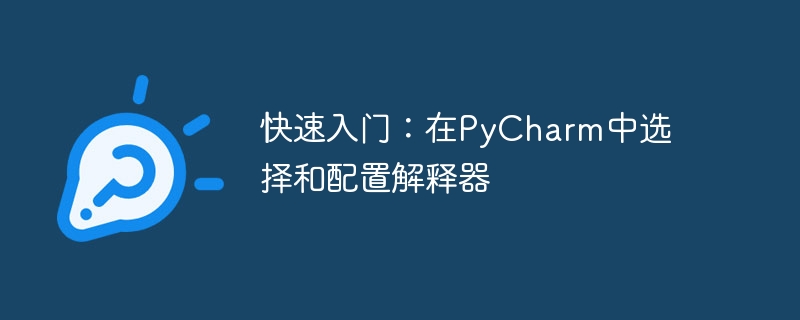

Quick Start: Selecting and Configuring the Interpreter in PyCharm, Specific Code Examples Required
Introduction:
PyCharm is an integrated development designed for Python development The environment provides many powerful functions and tools to facilitate developers to write, debug and manage code. When using PyCharm to develop Python projects, correctly selecting and configuring the interpreter is a very important step. This article will introduce you to how to select and configure the interpreter in PyCharm, and provide specific code examples.
In PyCharm, the way to select the interpreter is to click "File" in the menu bar and then select "Settings". In the pop-up dialog box, expand the "Project: [project name]" option, and then click "Python Interpreter". In the interpreter settings on the right, click the "Add" button.
3.1 Using the system interpreter
If we have already installed the Python interpreter in the system, we can choose the interpreter already in the system. In the list on the left of the dialog box, select "System Interpreter" and then select the Python interpreter version you want to use in the drop-down menu on the right. Click the "OK" button to save the settings.
3.2 Manually specify the interpreter path
If there is no correct Python interpreter in the system, or we want to use a specific version of the Python interpreter, we can manually specify the path to the interpreter. In the list on the left of the dialog box, select "New Environment", and then click the "..." button to select the path to the Python interpreter. Click the "OK" button to save the settings.
Please note that if you choose to specify the interpreter path manually, we need to ensure that the specified Python interpreter has been installed in the system.
import sys print(sys.version)
Then click the run button (green triangle button) to run the code. If the version information of the Python interpreter is correctly output in the PyCharm console, the configuration is successful.
Summary:
Selecting and configuring the interpreter is an important step in using PyCharm for Python development. Correct interpreter settings ensure that our code can run in the correct environment and take full advantage of the various features and tools provided by PyCharm. This article introduces you to the method of selecting and configuring the interpreter in PyCharm, and provides specific code examples. I hope it will be helpful to you. When using PyCharm for Python development, we must pay attention to selecting and configuring the interpreter to make our development work more efficient and smooth.
The above is the detailed content of PyCharm Guide: Getting Started with How to Choose and Configure an Interpreter. For more information, please follow other related articles on the PHP Chinese website!
 How to change pycharm to Chinese
How to change pycharm to Chinese
 pycharm installation tutorial
pycharm installation tutorial
 How to solve the problem that pycharm cannot find the module
How to solve the problem that pycharm cannot find the module
 How to install pycharm
How to install pycharm
 The difference between python and pycharm
The difference between python and pycharm
 How to configure the pycharm environment
How to configure the pycharm environment
 How to install the pycharm interpreter
How to install the pycharm interpreter
 What does pycharm mean when running in parallel?
What does pycharm mean when running in parallel?




